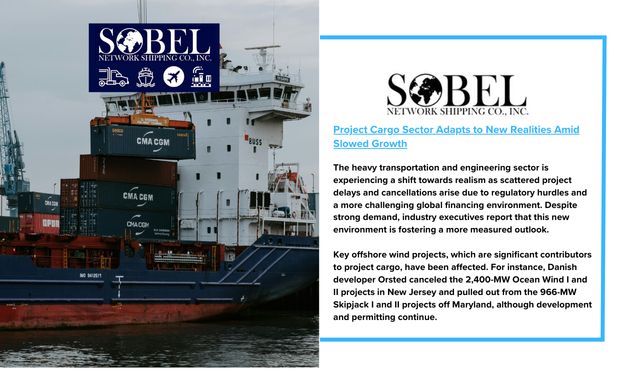The heavy transportation and engineering sector is experiencing a shift towards realism as scattered project delays and cancellations arise due to regulatory hurdles and a more challenging global financing environment. Despite strong demand, industry executives report that this new environment is fostering a more measured outlook.
Key offshore wind projects, which are significant contributors to project cargo, have been affected. For instance, Danish developer Orsted canceled the 2,400-MW Ocean Wind I and II projects in New Jersey and pulled out from the 966-MW Skipjack I and II projects off Maryland, although development and permitting continue.
While bureaucratic obstacles slow progress, the heavy transport industry remains busy with global projects in power generation, infrastructure, and manufacturing. Yannick Sel of Sarens notes that while some delays are inevitable, they bring a dose of realism to supply chain expectations, which might otherwise have been overstretched.
However, not everyone shares this optimistic view. Riccardo Tippmann, a consultant and former director at Fagioli, observes a market slowdown, particularly in Europe, where political instability and economic uncertainty are taking a toll. He also highlights a slowdown in renewable energy investments in Europe, contrasting with continued growth in oil and gas projects.
The shift in focus from renewable energy to traditional oil and gas development by major companies like Shell and Exxon is another factor reshaping the industry. Rising costs, competition, and lackluster returns are driving these decisions, as noted in recent corporate reports.
Despite challenges, the offshore wind sector still has significant growth potential. A McKinsey report highlights the vast global capacity for both fixed and floating offshore wind, although recent bidding rounds in the UK have seen limited interest.
In North America, power and infrastructure projects continue to drive demand for heavy transport services. Jeff Latture of Barnhart Crane & Rigging reports a steady flow of projects, particularly in manufacturing, which is returning to the U.S. This has created demand for heavy lift services to move machinery and equipment.
The Middle East remains an active market, despite challenges such as delays at Saudi Arabia’s NEOM project. Bureaucracy and aging infrastructure present ongoing issues in Europe, where ESTA, a lobbying group, calls for urgent investment in key trade routes to improve efficiency and safety.
Regulatory inconsistencies across Europe further complicate operations. Ton Klijn of ESTA stresses the need for common regulations to streamline the movement of heavy loads, which is currently hampered by differing rules and outdated infrastructure.
In response to these challenges, companies like Mammoet are reorganizing their operations. Mammoet, the world’s largest heavy transport company, is splitting its operations into two divisions: large projects and crane rentals, reflecting broader industry trends towards specialized services and equipment rental.
Overall, the heavy transport sector is adjusting to a more complex and uncertain environment, with companies adapting their strategies to maintain efficiency and profitability in the face of new challenges.


